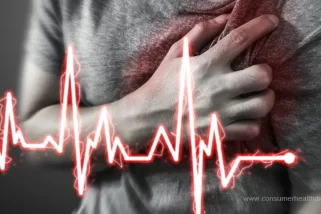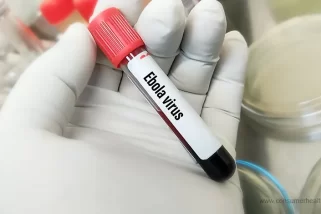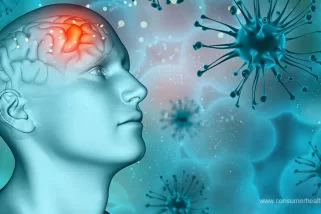In This Article
Hexarelin is a synthetic growth hormone-releasing peptide that, like its natural analog ghrelin, attaches to and activates the brain's growth hormone secretagogue receptor (GHSR).

We will further discuss the effects of Hexarelin on the cardiovascular system in this article. On the other hand, the fact that GHSR is found peripherally in the heart and blood vessels suggests that Hexarelin may directly influence the functions of the cardiovascular system.
In addition, the non-GHSR CD36 functions as a particular cardiac receptor for Hexarelin. Compared to ghrelin, it has increased stability and efficacy, and as a result, it shows promise as a potential cardiovascular therapeutic agent.
In isolated working hearts, researchers found that Hexarelin's effect on the heart was primarily mediated by the GHSR 1a receptor and, significantly, by activating the CD36 receptor.
In this condensed review, we discuss the evidence about the effect that Hexarelin has on the cardiovascular system.
#1. The Effect of Hexarelin on the Cardiovascular System
The effect of inotropes
Hexarelin administered intravenously in acute doses produced a transiently beneficial inotropic effect. The administration of Hexarelin led to increased left ventricular ejection fraction (LVEF), cardiac output, and cardiac index while simultaneously lowering wedge pressure [1].
Stopping the process of apoptosis
In neonatal rat cardiomyocytes, Hexarelin significantly reduced the apoptosis and DNA fragmentation generated by angiotensin II and enhanced the number of viable myocytes.
Additionally, it prevented doxorubicin from inducing apoptosis in H9c2 cardiomyocytes and endothelial cells while enhancing their survival ability.
Through this mechanism, chronic administration of Hexarelin prevents stress-induced activation of neurohormonal systems as well as the death of cardiomyocytes.
Ischemia-reperfusion damage
A treatment with Hexarelin protected the electrophysiological properties of cardiomyocytes after ischemia-reperfusion injury, inhibited cardiomyocyte apoptosis, promoted cell survival by modifying mitogen-activated protein kinase pathways, and produced a positive inotropic effect on ischemic cardiomyocytes.
Ischemia-reperfusion injury can damage the electrophysiological properties of cardiomyocytes, which can lead to heart failure.
Chronic administration of the peptide to rats with GH deficiency protected against ischemic and post-ischemic ventricular dysfunction.
It prevented hyperresponsiveness of the coronary vascular bed to angiotensin II in perfused hearts. GH deficiency is a genetic condition that causes growth hormone (GH) production to be impaired.
A heart attack or myocardial infarction
Hexarelin therapy was observed to improve stroke volume, stroke volume index, cardiac output, and cardiac index while also decreasing total peripheral resistance.
Researchers compared this improvement to normal saline, which did not have these effects.
Cardiac fibrosis
The treatment of spontaneously hypertensive rats resulted in a significant reduction in cardiac fibrosis. Professionals accomplished this result by lowering the amount of collagen deposition in the interstitial and perivascular myocardium, as well as the myocardial hydroxyproline content, and by lowering the expression of collagen I and III mRNA and protein.
Additionally, treatment with Hexarelin led to an enhancement in the activities of matrix metalloproteinases 2 and 9 while simultaneously leading to a decrease in the expression of the tissue inhibitor of metalloproteinase-1 in myocardial mRNA.
The development of atherosclerosis
Adult Sprague-Dawley rats showed evidence of the peptide's ability to inhibit the development of atherosclerosis.
In atherosclerotic rats, treatment with the peptide reduced the formation of atherosclerotic plaques and neointima, partially reversed the ratio of serum high-density lipoprotein cholesterol to low-density lipoprotein cholesterol, and improved serum nitric oxide levels as well as aortic mRNA expression of endothelial nitric oxide synthase, GHSRs, and CD36.
In addition, persistent therapy with Hexarelin did not reduce the high levels of triglycerides, but it dramatically lowered plasma cholesterol levels in obese rats.
#2. Hexarelin is responsible for the activation of the cardiac receptor.
It has been hypothesized that Hexarelin's effect on the cardiovascular system is independent of GH and that this effect is mediated via the activation of cardiac receptors.
The fact that the hexarelin peptide dramatically enhanced LVEF in both ordinary subjects and patients with GH deficiency and prevented heart damage in hypophysectomized rats during ischemia-reperfusion suggests that the peptide's cardioprotective action is not caused by stimulation of the GH axis.
Hexarelin can attach to specific locations in the heart. Specific 125I-Tyr-Ala-Hexarelin binding was seen in the human circulatory system, and the ventricles were found to have the highest amounts of 125I-Tyr-Ala-Hexarelin, followed by the atria, coronaries, carotid, endocardium, and vena cava.
Experts observed this aspect in the human cardiovascular system. At the moment, there are two different types of cardiac receptors that have been proposed for Hexarelin.
Cardiac GHSR 1a receptor
The peptide caused an increase in the amount of GHSR mRNA that was expressed in cardiomyocytes.
In addition, Hexarelin dramatically lengthened the action potential duration, exhibited positive inotropic effects, and retained electrophysiological features in isolated myocytes following an ischemia-reperfusion injury.
Professionals discovered that the GHSR 1a receptor was responsible for mediating these effects.
Cardiac CD36 receptor
Specifically, the peptide binds to CD36, a multifunctional glycoprotein found in cardiomyocytes and microvascular endothelial cells [2].
CD36 acts as a receptor for the peptide. In hearts already perfused, Hexarelin-mediated activation of CD36 led to an increase in the dose-dependent coronary perfusion pressure.
Experts did not find this impact in the hearts of mice with a genetic deletion of CD36 (CD36-null mice) or rats with spontaneously high blood pressure genetically deficient in CD36.
#3. Hexarelin vs. Ghrelin
Compared to its natural counterpart, ghrelin, the effects that Hexarelin exerts on the cardiovascular system are far more powerful and favorable.
However, additional investigations found that when GHSR 1a activation was the same, Hexarelin and ghrelin had similar cardiac effects.
This was the case, although the dosage of ghrelin was 10 times larger than Hexarelin in terms of molarity.
Research also indicated that activation of GHSR 1a by ghrelin- or Hexarelin-mediated had a comparable protective impact on cardiomyocytes following ischemia-reperfusion injury [3].
Researchers showed this action to decrease cardiomyocyte apoptosis and promote cell survival.
Hexarelin - The Final Thoughts
The cardioprotective effects of Hexarelin in common cardiovascular conditions like cardiac fibrosis, ischemic heart disease, cardiac dysfunction, and atherosclerosis appear to be mediated by the direct binding and activation of its cardiac receptors CD36 and GHSR 1a. This is because Hexarelin binds to and activates these receptors.
Since Hexarelin is a chemically stable synthetic GHS with more robust cardiac effects than its natural analog, it can be a possible alternative to ghrelin as a promising therapeutic agent for the treatment of cardiovascular illnesses. This is because Hexarelin is a GHS.
Animal and cell line investigations provide the evidence considered “prima facie.” Because of this, establishing its efficacy requires the completion of clinical trials involving human patients. Click here to buy and learn more about this peptide.
3 Sources
We review published medical research in respected scientific journals to arrive at our conclusions about a product or health topic. This ensures the highest standard of scientific accuracy.
[1] Kosaraju A, Goyal A, Grigorova Y, Makaryus AN. Left Ventricular Ejection Fraction. 2022 May 1. In: StatPearls [Internet]. Treasure Island (FL): StatPearls Publishing; 2022 Jan–. PMID: 29083812.[2] CD36: https://en.wikipedia.org/wiki/CD36
[3]Growth hormone secretagogue receptor: https://en.wikipedia.org/wiki/Growth_hormone_secretagogue_receptor







 This article changed my life!
This article changed my life! This article was informative.
This article was informative. I have a medical question.
I have a medical question.
 This article contains incorrect information.
This article contains incorrect information. This article doesn’t have the information I’m looking for.
This article doesn’t have the information I’m looking for.